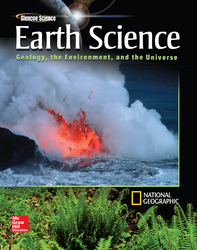1 A) early 1950s B) 1500s C) early 1800s D) late 1800s 2 A) crest height B) wind speed C) current direction D) water depth 3 A) North Atlantic deep water B) Antarctic intermediate water C) Antarctic bottom water D) Gulf Stream 4 A) evaporation B) density differences C) polar ice caps D) currents 5 <a onClick="window.open('/olcweb/cgi/pluginpop.cgi?it=gif::::/sites/dl/free/0078746361/561661/an.GIF','popWin', 'width=NaN,height=NaN,resizable,scrollbars');" href="#"><img valign="absmiddle" height="16" width="16" border="0" src="/olcweb/styles/shared/linkicons/image.gif"> (6.0K)</a> A) potassium bromide B) calcium chloride C) sodium sulfate D) magnesium chloride 6 A) Cl B) Na C) K D) Ni 7 A) 37 percent B) 37 ppt C) 30 ppt D) 35 ppt 8 A) the formation of cold water coming from Antarctica B) a layer of cold water in the ocean C) a zone of the ocean where the temperature decreases with depth D) zone of the ocean where in salinity increases with depth 9 A) full tides B) spring tides C) neap tides D) tidal ranges 10 A) the varying depths of the oceans B) water temperature and salinity C) the movement of tectonic plates on the seafloor D) the rotation of Earth 11 A) to the left in the northern hemisphere and to the right in the southern hemisphere B) to the right in the northern hemisphere and to the left in the southern hemisphere C) to the left in both the northern and southern hemispheres D) to the right in both the northern and southern hemispheres 12 A) at low latitudes B) at the poles C) at high latitudes D) at temperate latitudes 13 A) Light rays can only penetrate that far. B) The water is too dense for light to penetrate. C) Cold water doesn't transmit light as well as warm. D) Suspended sediment in water blocks the light from going deeper. 14 A) right above the surface B) just below the ocean surface C) between the surface and seafloor D) at the bottom, where water is in contact wit the seafloor 15 A) friction B) orbit C) gravity D) wind





